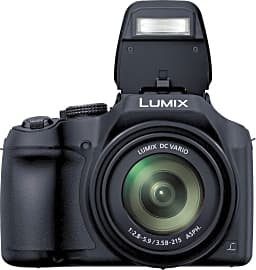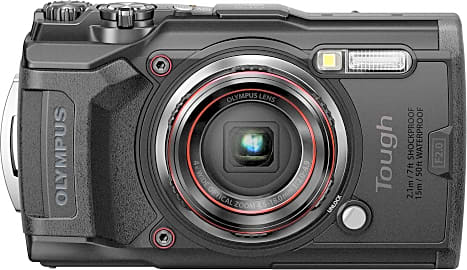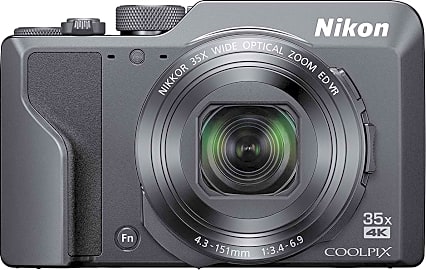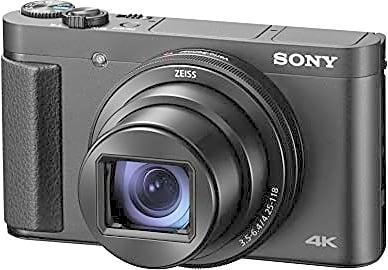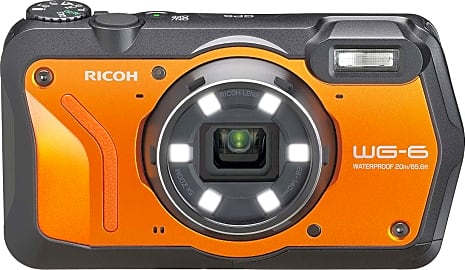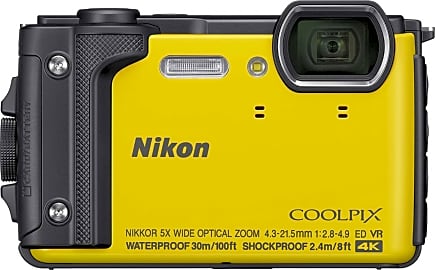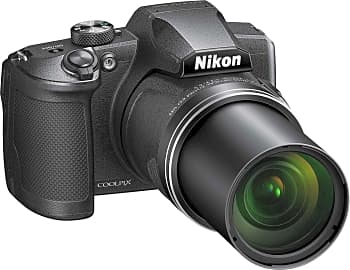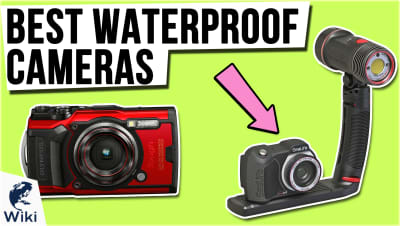The 10 Best Budget Digital Cameras

This wiki has been updated 32 times since it was first published in February of 2017. If you're looking for a capable and user-friendly digital camera, but you don't want to spend a ton of money on a DSLR, search no further than this list. Ideal for recording all your favorite memories with friends, family, and loved ones, these budget options can give you beautiful, high-quality photos that won't break the bank. We've ranked them here by image quality, durability, and value. When users buy our independently chosen editorial picks, we may earn commissions to help fund the Wiki.
Editor's Notes
January 06, 2021:
It was a fairly painless round of updates, as the vast majority of our picks from last year still proved to be great choices for the category. We did, however, notice that the Polaroid Snap Touch 2.0 seemed to be suffering from some availability issues, so we went ahead and replaced it with the Olympus Tough TG-6. In addition to being able to snap some surprisingly nice photos, given its low price, the TG-6 – much like the Ricoh WG-6, Nikon W300 and other waterproof cameras – is built to take a beating, and has been drop tested from two meters.
If you can’t quite find a model that you’re interested in here, but you’re still not ready to sink the cash into an expensive mirrorless unit or DSLR, then you may be interested in investigating our list of bridge cameras — which are intended to provide an intermediate step.
October 01, 2019:
Nearly everything from our previous ranking has either been upgraded to a newer version by its company or been phased out in favor of a different model. Only the Panasonic Lumix FZ85 remains as it was when we last curated this selection, and the likes of the Nikon A900, Canon SX730, and even the Polaroid Snap Touch have seen upgrades. In the process of examining those new models, we uncovered a few other viable candidates for the budget category, the most exciting of which is probably the Panasonic Lumix ZS70S, which offers exceptional features for its price point, including a Leica lens, electronic viewfinder, and control ring for a more professional shooting experience.
Some of these admirable features are also present in the Sony model, but they come in at a somewhat higher price point. We ultimately decided to include it despite the fact that it stretches above the "budget" limit we adhered to in our previous ranking. It's also important to consider the demographic here, as a pro-sumer photographer would likely see this Sony model as a steal compared to an expensive DSLR or mirrorless kit, where an entry level shooter might stick to something more akin to the Panasonic at number two or one of our included bridge cameras.
You'll also likely notice that, compared to our previous ranking, we've included a trio of very capable waterproof cameras. These are each designed to take stills and video when submerged in water, not just to resist damage if they're splashed. This level of ruggedness is certainly welcome in a budget option, even if they sacrifice things like optical zoom range and articulating screens. If you know you're going to shoot video underwater, the Ricoh model's LED ring light feature is a must have, especially at depths where sunlight really begins to fade.
A Brief History Of Cameras
Eastman would also pioneer mass-market photography with his Brownie box camera, which was the first model capable of taking snapshots.
The first thing that comes close to the contraption that we now recognize as a camera is probably the camera obscura, which dates as far back as 500 B.C.E. The camera obscura is what happens when a tiny, pinhole image in a screen (such as a wall or strip of animal hide) is projected on the other side of that screen.
Of course, one thing the camera obscura was missing was the ability to actually capture an image. Still, it was all mankind had to work with (other than paintings) until around 1825, when the French inventor Nicéphore Niépce devised a system known as heliography.
Niépce would die a few years later, but his partner, Louis Daguerre, soldiered on with their experiments, ultimately creating a process he named the daguerreotype. This process was laborious and painstaking, but created reasonably good pictures.
It would be the standard until the latter part of the 19th century, at which point George Eastman started using celluloid film in his new invention, the Kodak camera. Eastman would also pioneer mass-market photography with his Brownie box camera, which was the first model capable of taking snapshots.
The next big leap forward came when manufacturers went digital. News media made the jump long before average Joes did, but by the dawn of the 21st century, digital cameras were nearly as good — and equally affordable — as their analog counterparts. Most regular shutterbugs made the switch as a result, and few have looked back.
Today, there are digital cameras everywhere. It's truly the dawn of the photography age, as just about everyone can be found constantly documenting their lives and uploading the results for the world to see.
The Difference Between High-End And Budget Digital Cameras
Before we get started, it's worth acknowledging that, if you're a professional photographer, you probably don't want to scrimp on your digital camera unless you absolutely have to.
That said, most people aren't shooting fashion shows or reporting from war zones. For the vast majority of users, a basic camera can do everything they need (and probably a whole lot more).
Unless you know what you're doing, though, it's probably better to let the camera do all the thinking.
The build quality will be the first tell-tale sign of the camera's overall worthiness, as it's unlikely that you'll find a premium model housed in a cheap plastic case. Of course, all users won't necessarily want a premium camera in a high-end case, especially if they have young kids or tend to be butterfingers. The cheaper housing might even be a selling point in those situations, as if you drop the camera and it breaks, it's no big loss, whereas cracking a fancy camera could set you back thousands.
Cheaper options usually take all of the guesswork out of snapping a pic, making everything fully automatic, while higher-end models allow you to tinker with every little detail. Unless you know what you're doing, though, it's probably better to let the camera do all the thinking.
Sensor size and lens quality are worth checking out, as well. These control everything from depth of field to autofocus speed, with more expensive models offering you better specs across the board. Again, however, the difference is such that you likely won't notice it if all you're trying to do is get a quick pic with Mickey and Minnie.
Ultimately, it's a question of how picky and dedicated you are. If you can't handle even the slightest flaw in your photos, then sure, spring for an expensive, fancy model. If you just want to capture memories without a lot of fuss, though, you can save a lot of money by going with a budget option — and chances are you won't even realize what you're missing.
Why You Need A Digital Camera
The fact of the matter is, while smartphones have eliminated the need for cameras in many situations, there are still quite a few scenarios when you'll be grateful to have a dedicated unit.
However, you'll be grateful you have one when you're going back over old photos and you find you actually captured certain moments just the way you remembered them.
For special occasions, you'll be glad you have an actual camera — one that's higher quality and whose lens hasn't been dropped a couple hundred times. These are the moments you know you'll want to remember, so make an effort to capture them in as much detail as you can. Your phone can still work for those spur-of-the-moment shots.
Also, if you're interested in photography at all, you'll want your own camera. One of the great things about the selfie era is that it's introducing a lot of people to the wonders of photography, so if you feel like you've caught the bug, by all means invest in proper equipment.
Anyone who goes to lots of live events will want an actual camera, as well. They're much better for taking photos of subjects in motion, so you won't come home from the Blur concert with nothing but, well, blur. Even better, you'll look like a sophisticated professional, rather than just another stooge with their cellphone in the air, ruining the view for everyone.
Strictly speaking, you may not need a digital camera if you've got an advanced enough smartphone. However, you'll be grateful you have one when you're going back over old photos and you find you actually captured certain moments just the way you remembered them.



